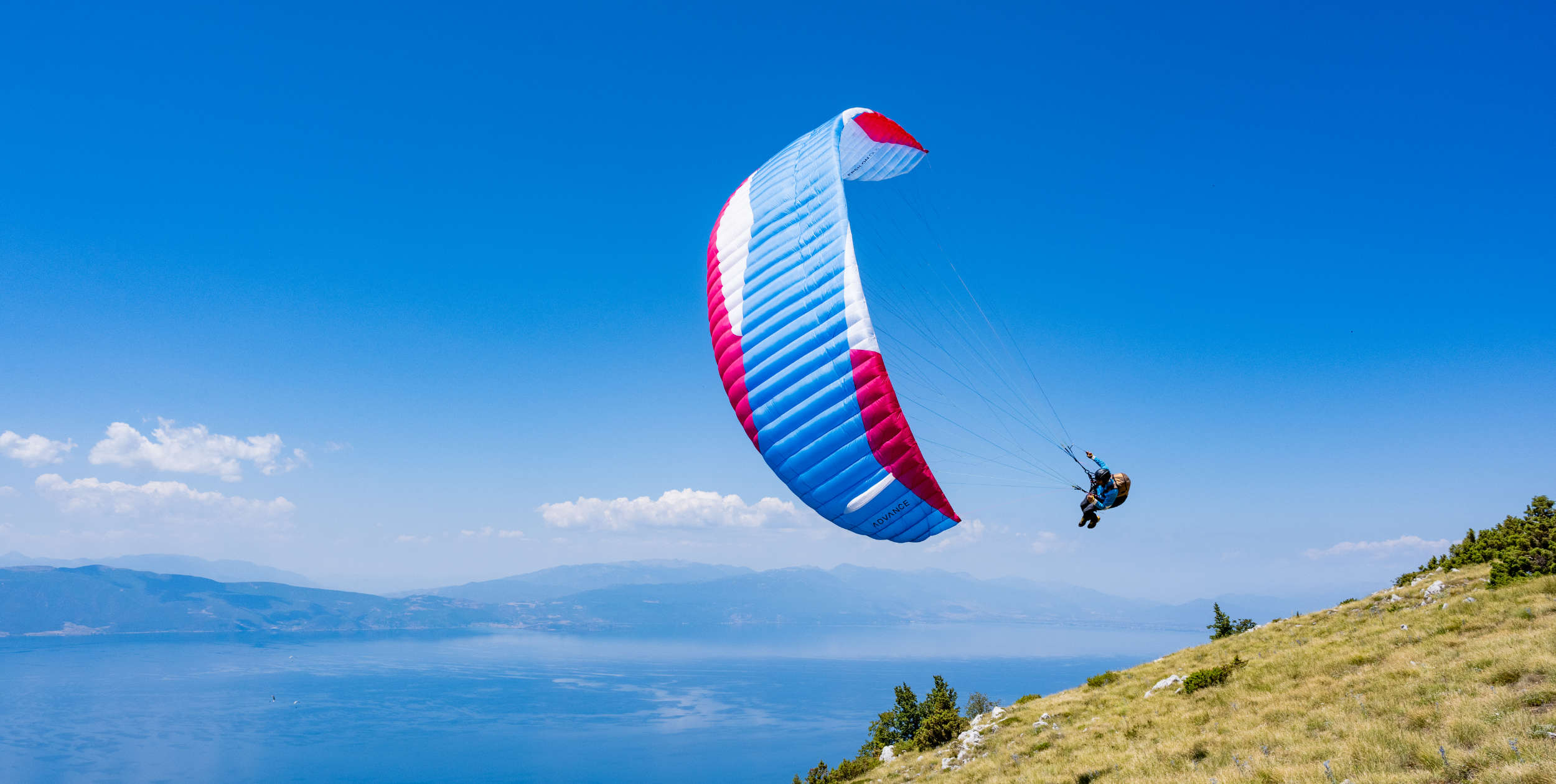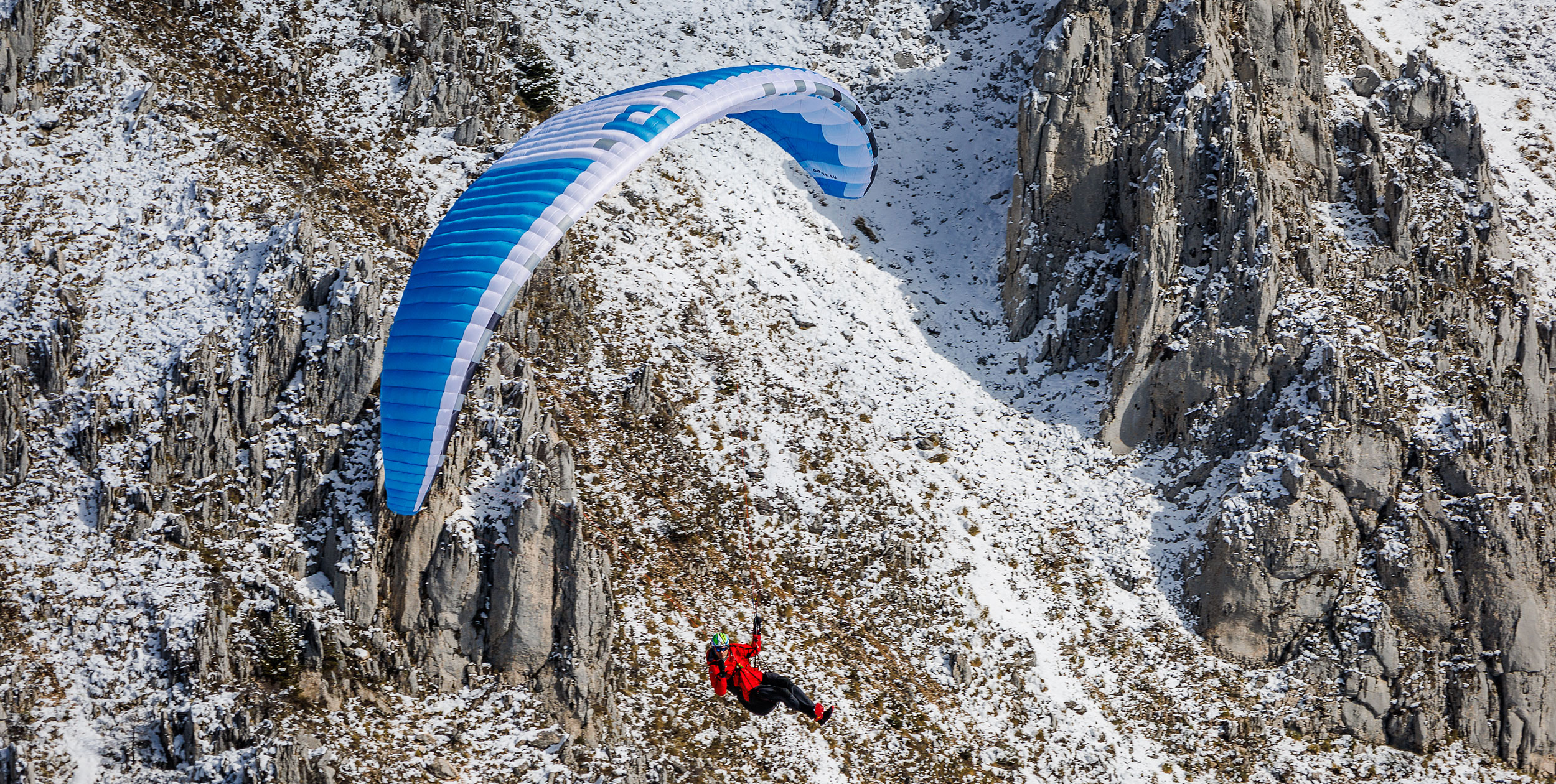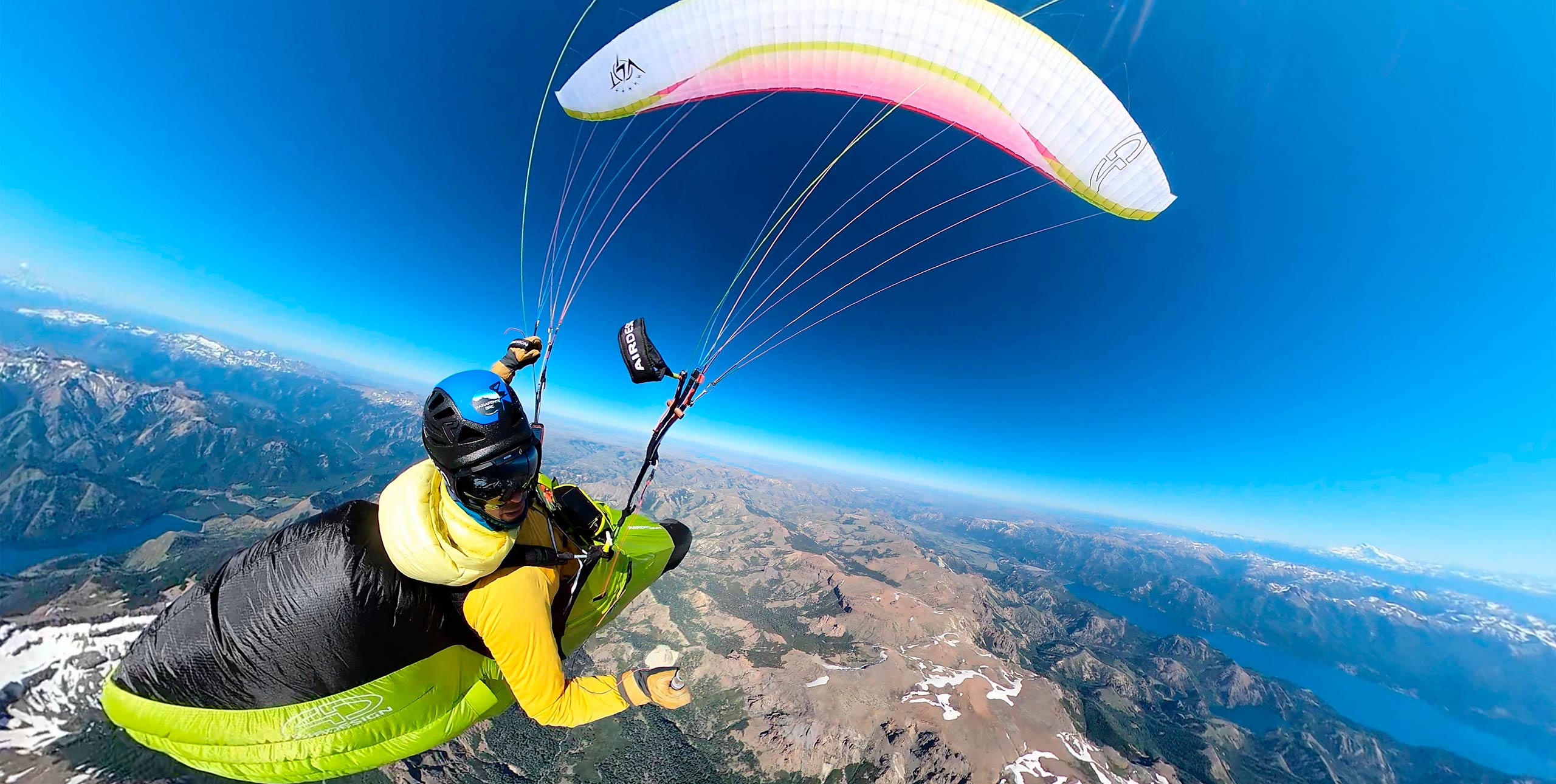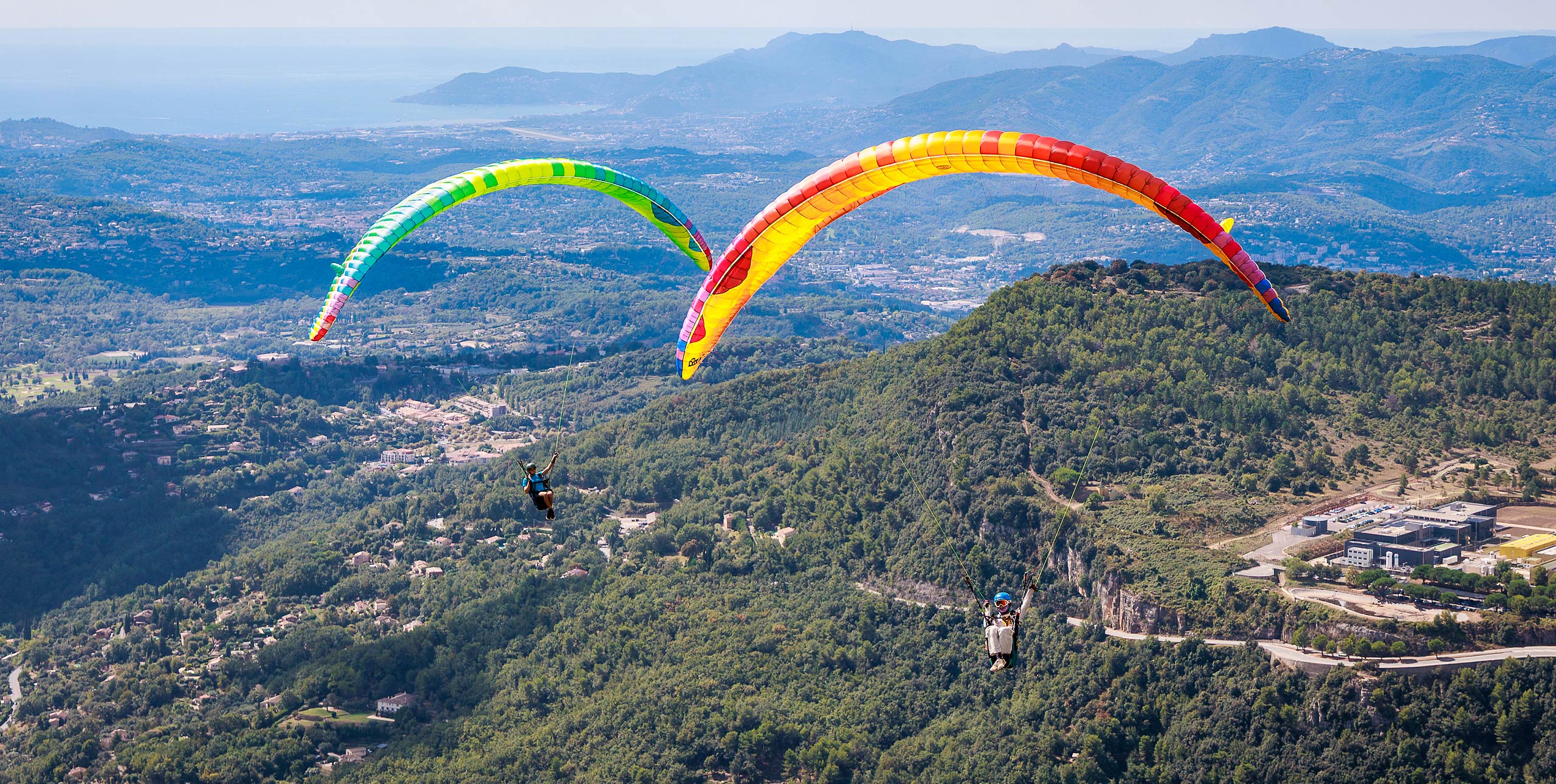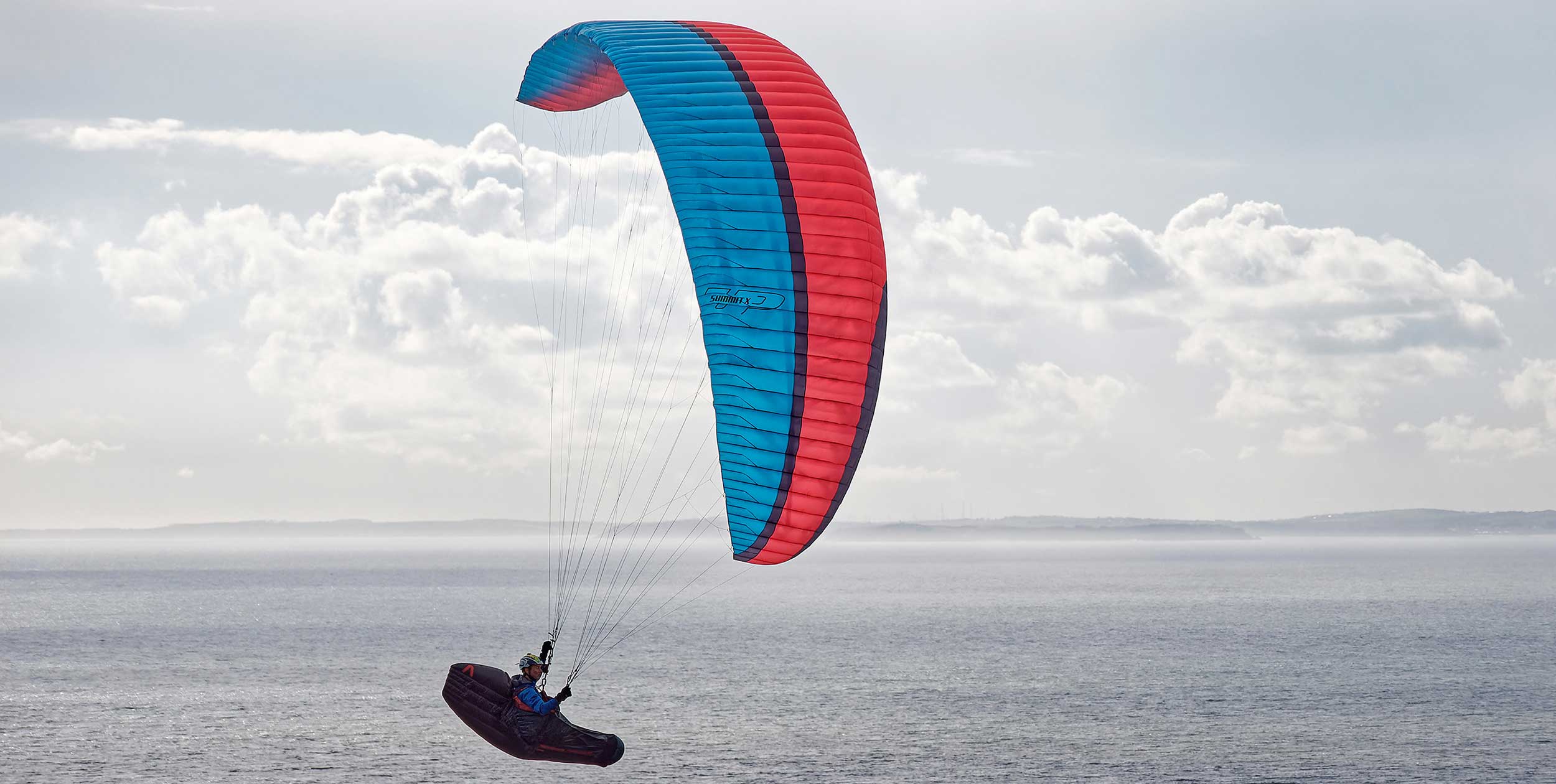
Erwin Voogt finds this redesigned high-B offers a relaxing ride.
On paper UP’s new high-B Summit X is a step down in aspect ratio from its predecessor and a step forward as a 2.5 line hybrid. But what does that mean in the air?
This spring the weather in the Alps was far from great. Remarkably, for a two-week flying holiday in May, we ended up in the UK in search of the best weather. UP’s new high-end EN-B the Summit X was my wing this period and the search for flyable weather took me to four different countries: Italy (Bassano); Germany (Sauerland); the UK (England and Wales); and my home country, The Netherlands.
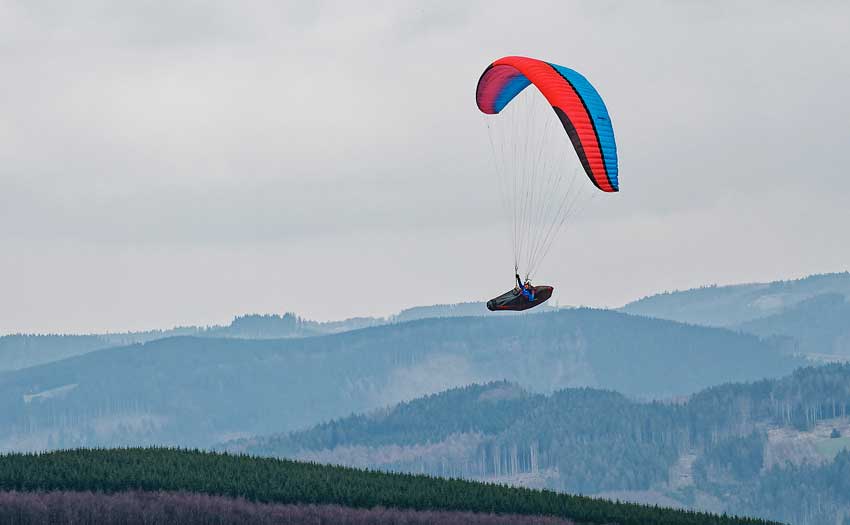
A more modest wing?
The aspect ratio of the Summit X is at 5.9 less exotic for an EN-B than the 6.3 aspect ratio of its predecessor, the Summit XC4. Also the cell count is lower, now 55 instead of 57. The wing loading is about the same.
All in all, on paper the new Summit X doesn’t push the limits of the EN-B class like the XC4 did. Actually, in the smallest weight range, 65-85kg, the Summit XC4 was certified as an EN-C instead of EN-B.
This is confirmed by UP’s designer Frantisek Pavlousek: “The Summit X feels less aggressive, smoother and calmer, which in the end contributes to the overall performance improvement.” And (spoiler alert) I can confirm this too, the Summit X is a relaxed EN-B wing to fly.
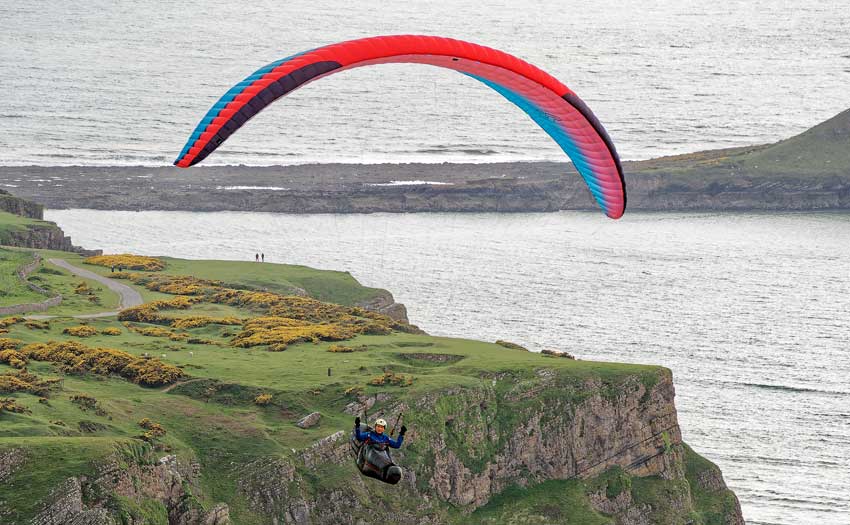
Design and construction
The Summit X was designed together with the EN-C Trango X, says Frantisek. “Although the design started as an evolution of the predecessor, at the end there’s not much left of the Summit XC4.” Besides the lower aspect ratio, the Summit X is a 2.5-liner hybrid. Two lines run from the C-riser to the centre and the half-span. The A and B-risers have three main lines each, going to the centre, half-span and tips. The tips therefore are two-liners, the centre is a three-liner, like most 2.5 line hybrids.
Combined with thinner lines, this gives a reduction of line drag of about 10%, say UP. Also, the rear-riser control is more efficient, like with a full two-liner.
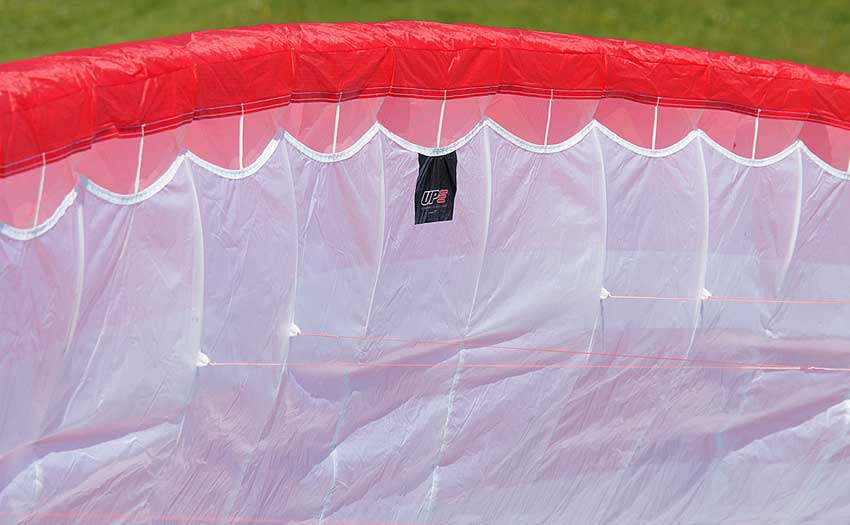
With a weight of 4.5kg for my size SM (75-100kg), the Summit X is quite lightweight, although lightweight has become the new normal. The fabric is actually not the lightest, however. For durability UP chose a mixture of Porcher Skytex 42 and 38 (g/m²) for the leading edge. The trailing edge and bottom surface is Dominico D20 (29 g/m²).
The 55 half-rounded cells have strings in the cell openings to reduce ballooning. The wing profile is further improved with flexible rods in the nose and on the upper surface: Front Section and Rear Section Support, FSS and RSS, in UP nomenclature. The flat surface area is quite low. The average wing loading of approximately 3.8kg/m2 (flat surface) is a tad higher than most EN-Bs.

Except for the brake lines, all lines are unsheathed. They are a mixture of Edelrid aramid and Liros Dyneema lines. Although the Summit X is a 2.5 liner hybrid, UP added a few D-lines near the canopy. Frantisek explains that these extra attachment points, four per rib, result in a more precise aerofoil shape and therefore improve performance and safety.
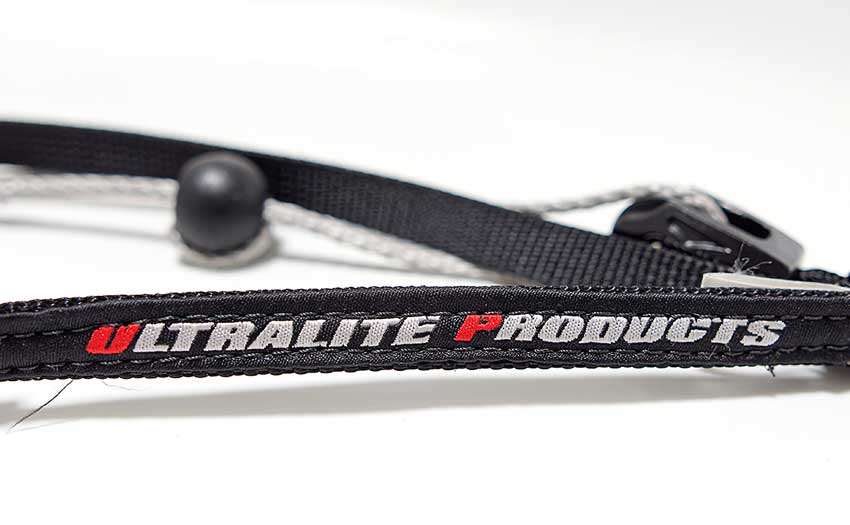
The ‘high performance risers’, as UP calls them, were introduced with the previous generation UP gliders. The B maillon is attached to a ball-bearing pulley travelling on a Dyneema line. When steering the glider with the C-risers, the B-lines are pulled down proportionally to prevent aerofoil deformation with friction reduced to a minimum, explains Frantisek. That may sound complicated, but in practice handling the risers is straightforward. The C-risers have plastic handles for control when flying on bar. That works great, although they complicate sorting the risers a little because the bars tend to weave themselves through the risers.
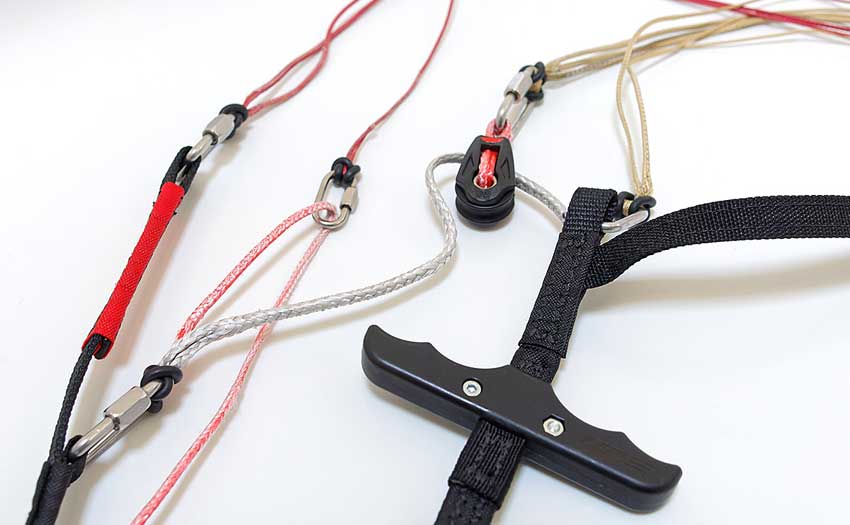
Although the UP Summit X is an innovative 2.5-liner hybrid, I found it felt familiar, uncomplicated and is a good looking wing.
In the air
Without wind, with lots of wind, by foot or on tow, the UP Summit X launches easily. The relatively small surface area helps when launching in demanding conditions. On a very windy day at Bo Peep (East Sussex, UK) the Summit X proved itself as a very easy-to-manage wing for launching, top-landing and groundhandling in tough conditions.
In the air the Summit X is a gentle wing. Of course, this is a high-end EN-B that needs some piloting, but not more than an EN-B pilot would expect.
In moving air, the tips move with it – there are only two rows of lines there. But it is and feels harmless.
Flying for a few hours in bumpy spring thermals is not exhausting. The wing gives the pilot enough information to find small lift, without being too talkative. Steering is direct and precise, but not aggressive. A low save above the red tiled roofs of Bassano or thermalling within touching distance from the treetops in Sauerland, the Summit X is a confidence-giving buddy.
And almost rare nowadays: big ears pop out by themselves when releasing the outer A’s. No need for a pump with the brakes. It’s a little detail that can be important when top-landing. There is a separate A-line for the big ears, but it is connected to a thin sort of loop instead of a riser. Pulling big ears is straightforward, but without gloves is not very comfortable. Need a quick descent? A spiral dive with the Summit X does not give the high G’s some other EN-B’s expose the pilot to. All in all, the Summit X is a sporty, easy to manoeuvre and comfortable wing that’s less close to the border of EN-B than its predecessor. But what about the…
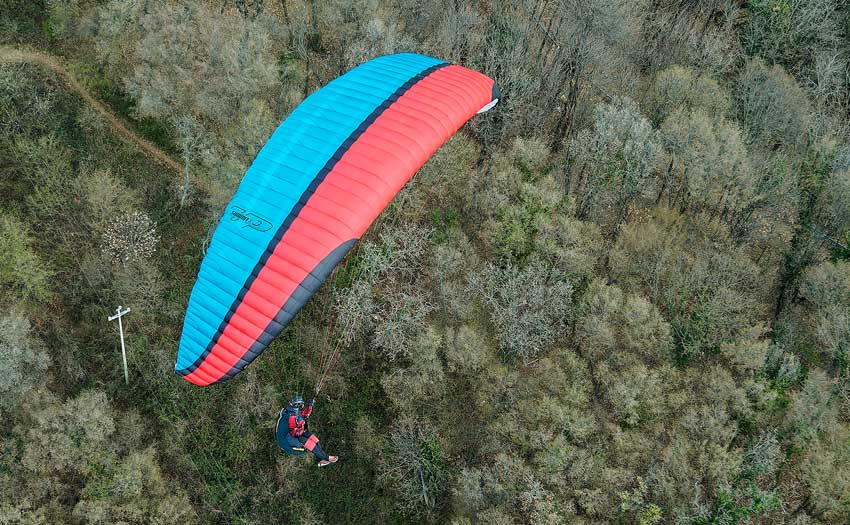
Performance
On full bar the Summit X is still a solid wing that can be easily controlled with the handles on the C-risers. Airspeed is always difficult to measure, but with an estimated 12km/h speed gain on full bar, it is maybe a few hairs faster than most EN-B’s. Flying tip-to-tip with another modern three-liner high-end EN-B, however, did not show a clear difference in glide ratio of the 2.5-liner Summit X. Not at trim nor full speed. But as always, take every statement about glide ratio with a grain of salt.
I would say that the Summit X has the edge in strong wind conditions. The slightly higher wing loading makes launching in those situations relatively easy and in the air a few kilometers per hour extra ground speed can make a difference.
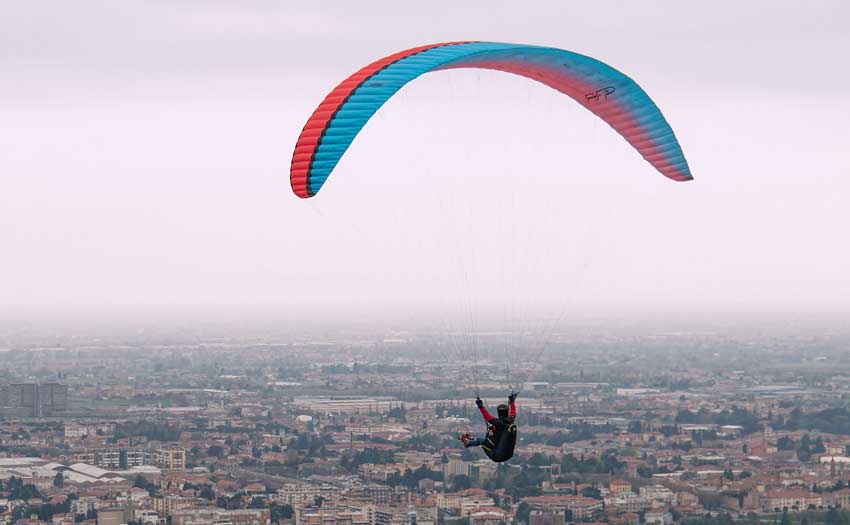
The verdict
With the ‘X’ UP have moved the Summit to the gentler zone of the high-end EN-B class. This is a wing that every EN-B pilot can fly without reservation. It is not pushing the limits of its class, although pilots who prefer flying low-end EN-B’s may find the Summit X quite agile.
UP designed the Summit X for pilots with a certain amount of experience in XC flying in various conditions. For these pilots it is a playful but kind companion for long journeys in the sky. Also, pilots who fly often in strong wind conditions should put the UP Summit X high on their list.
Manufacturer’s SPECIFICATIONS
UP say: “The Summit X feels less aggressive, smoother and calmer, which contributes to the overall performance improvement. It is meant to satisfy the needs and desires of the same group of pilots as the previous model”
Pilot level: Intermediate
Sizes: S, SM, M, L
Certified take-off weight (kg): 65-85, 75-100, 85-110, 100-125
Flat area (m2): 21.2, 23.1, 25.1, 26.6
Glider weight (kg): 4.2, 4.5, 4.8, 5.1
Cells: 55
Flat aspect ratio: 5.9
Certification: EN / LTF B
Erwin Voogt has been flying paragliders since 2008 and is a paragliding instructor from the Netherlands. He flew the UP Summit X (SM) this spring in Italy, Germany, UK and The Netherlands, paired with the Skywalk Range X-Alps 2 pod harness at an all-up weight of about 85kg
Published in issue 242 (August 2023)


